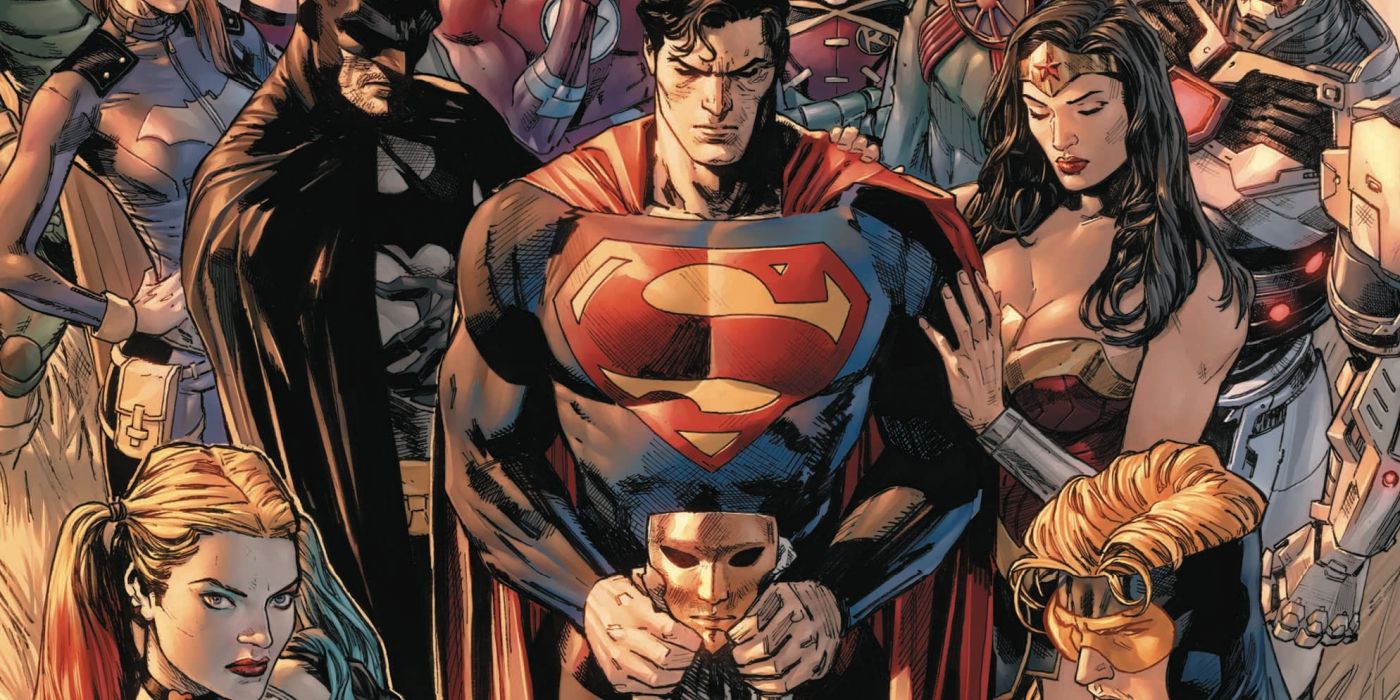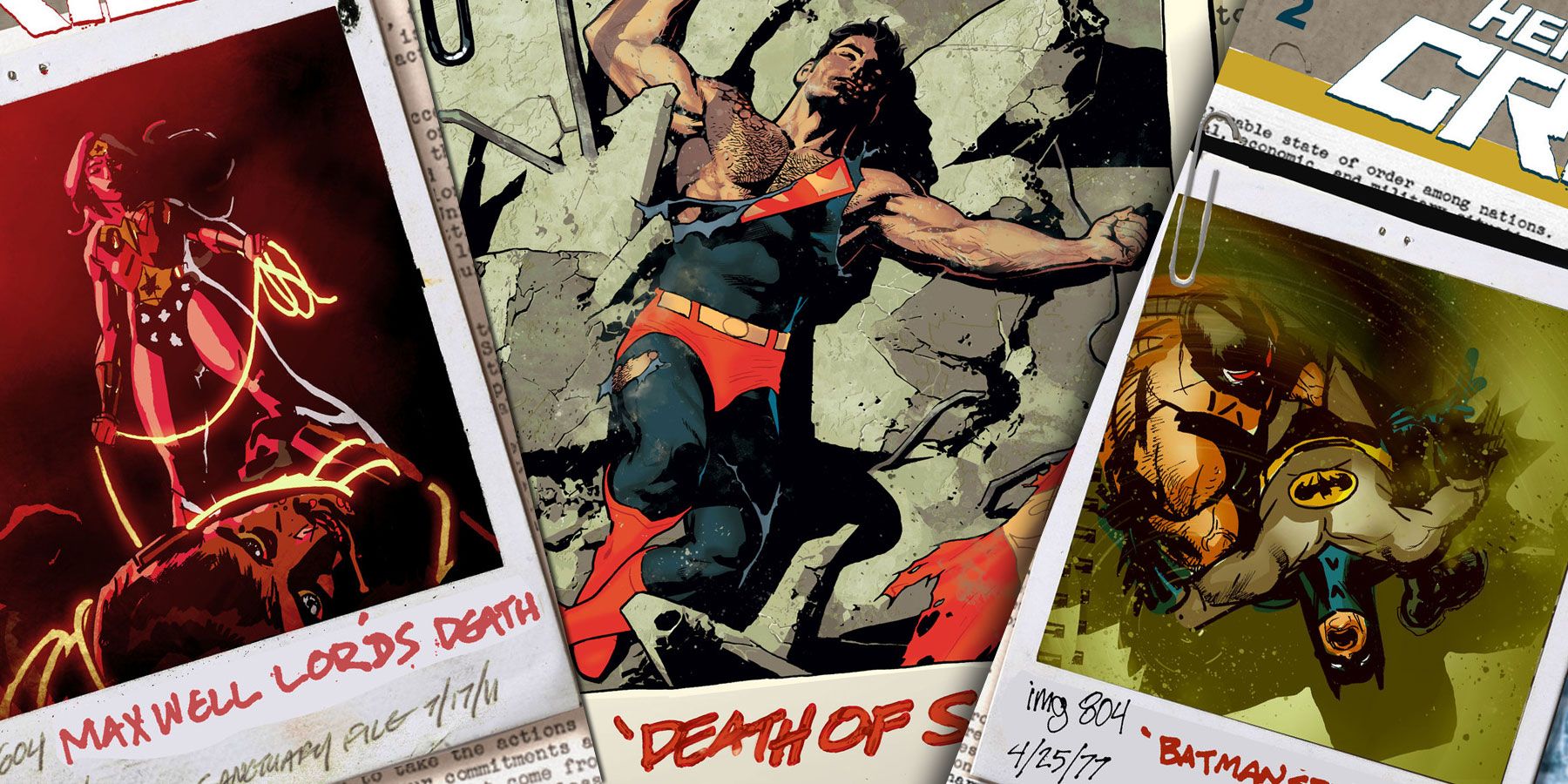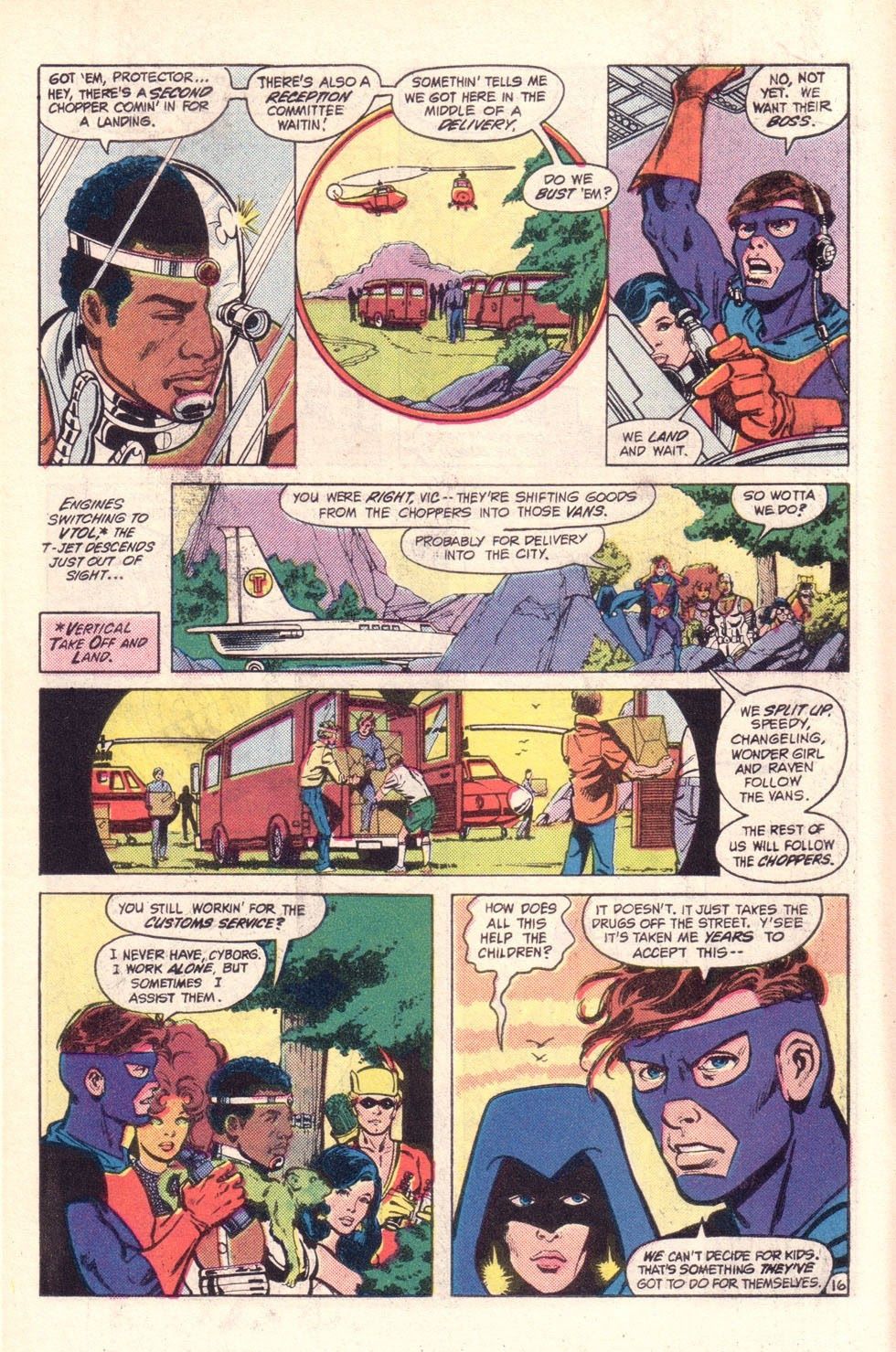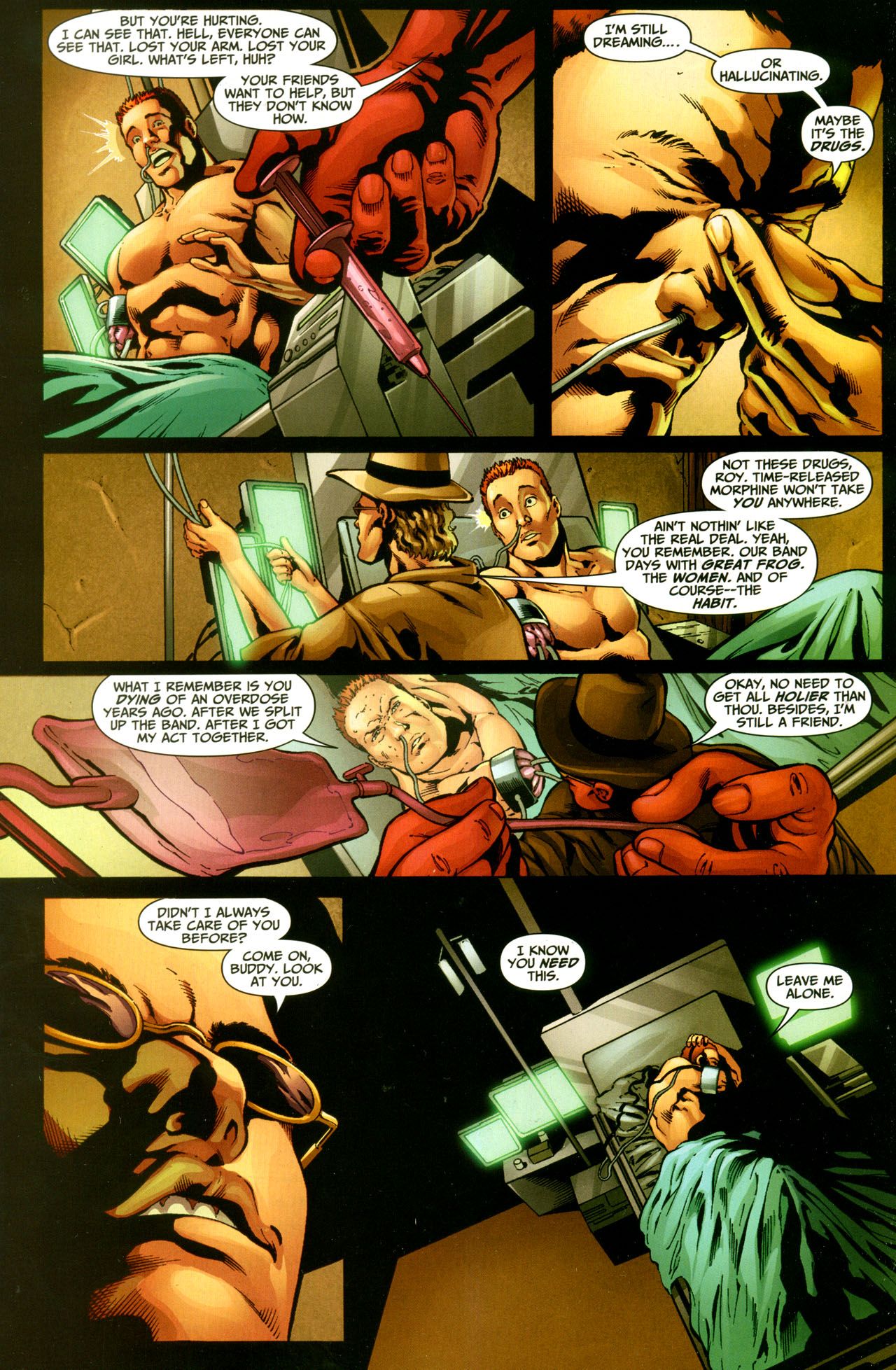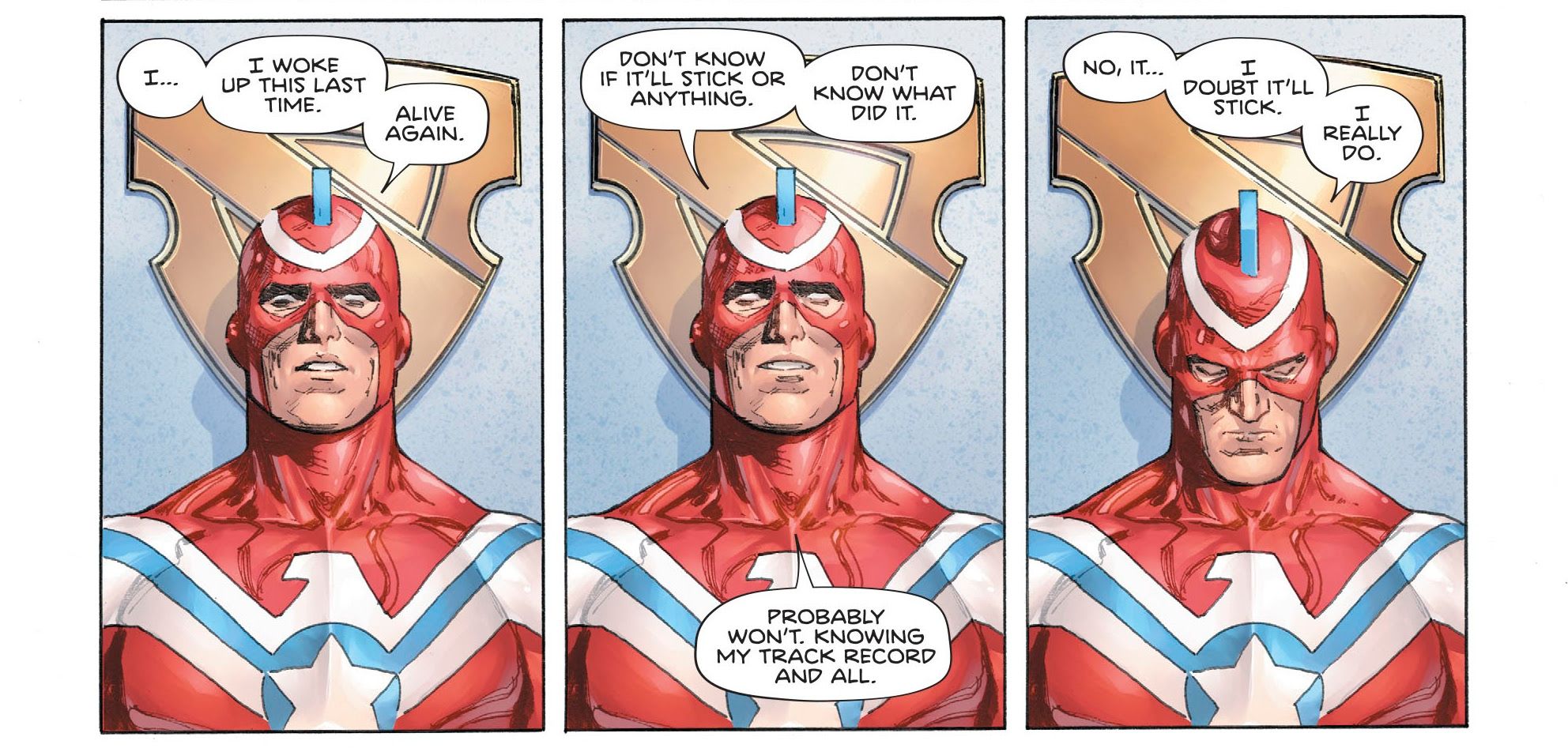WARNING: The following post contains major spoilers for Heroes In Crisis, on sale now.
Because Heroes In Crisis is about superheroes coping with personal trauma, it has a complicated relationship with DC's many status-quo-shattering events. Today we'll see what HIC might be saying through the large- and small-scale tragedies which it references.
Heroes In Crisis was written by Tom King, drawn by Clay Mann, Travis Moore, Lee Weeks, Mitch Gerads and Jorge Fornes; and colored by Tomeu Morey, Arif Prianto and Mitch Gerads. Clayton Cowles was the letterer, Brittany Holzherr was the Associate Editor, and Jamie S. Rich was the Editor.
Tragic Snapshots
Heroes In Crisis uses many of Ryan Sook's variant covers to depict key points in DC history. They include
– HIC #1: Superman's death in January 1993's Superman issue #75;
– HIC #2: Bane breaking Batman's back in Late July 1993's Batman issue #497;
– HIC #3: Wonder Woman breaking Maxwell Lord's neck in September 2005's Wonder Woman issue #219;
– HIC #4: Aquaman losing his hand in September 1994's Aquaman issue #2;
– HIC #5: The Joker murdering Jason Todd in Holiday 1988's Batman issue #428;
– HIC #6: Barry "Flash" Allen's death in Crisis On Infinite Earths, as seen by Kid Flash in March 1986's issue #12;
– HIC #7: Kilowog's death in March 1994's Green Lantern issue #50; and
– HIC #8: Harley Quinn's New 52 origin from May 2012's Suicide Squad issue #7.
Needless to say, Superman, Max, Jason, Barry and Kilowog were each brought back to life; and Batman and Aquaman were healed. We might therefore view these as extreme examples of the "illusion of change," but at the time they were each intended to reinvigorate the characters involved.
Better Days
Apart from its historical references, HIC had its own casualty list. Indeed, the original versions of Red Devil, Lagoon Boy, Commander Steel and Gnarkk were already dead (or incapacitated) in the pre-New 52 timeline. HIC then killed them off again, along with Blue Jay, Hot Spot, Gunfire, Solstice, Tattooed Man, Nemesis, Protector and Arsenal.
Since Poison Ivy and Wally "Flash" West both died and were revived within HIC's pages, the miniseries might be read cynically to have a mostly faceless body count. We're guessing that's not how King and company would have us interpret HIC, and we're not inclined simply to dismiss those deaths as window dressing. Many of these characters had significant exposure at one point or another prior to HIC. For example, writer Gerry Conway and penciller Chuck Patton introduced the modern-day Commander Steel in 1984's Justice League of America Annual issue #2. The grandson of a World War II hero, he was part of "JL Detroit" from beginning to end, dying in March 1987's Justice League of America issue #260.
Fellow Leaguer Blue Jay (created by Denny O'Neil and Dick Dillin) was a one-off Ant-Man/Yellowjacket parody who first appeared along with other "Avengers" in February 1971's Justice League of America issue #87. After a brief return in June-July 1987's Justice League issues #2-3, he became a regular member of Justice League Europe (starting in February 1990's issue #11) and the last pre-New 52 JLA (starting in December 2009's JLofA issue #38). In March 2011's JLofA issue #53, he decided to leave DC-Earth and explore the Multiverse.
Cary Burkett and Dan Spiegle created Tom "Nemesis" Tresser for a backup feature in Brave and the Bold, starting with September 1980's issue #166. After that ended in 1982, he joined the Suicide Squad (starting in June 1987's issue #2) and then the Department of Metahuman Affairs (starting in August 2006's Wonder Woman issue #1), where he met and romanced fellow agent Diana Prince.
Gunfire (created by Len Wein and Steve Erwin for 1993's Deathstroke The Terminator Annual issue #2) had a short-lived ongoing series (May 1994-June 1995) and bounced around in the early 2000s before popping up in actual Limbo in 2008-09's Final Crisis. Similarly, Mark "Tattooed Man" Richards had a decent Final Crisis role and got a FC spinoff miniseries (2009's six-issue Ink) after Geoff Johns and Ethan Van Sciver created him for April 2006's Green Lantern issue #9. He then appeared in the Deathstroke-led Titans (2010-11).
Perhaps no Teen Titan is more obscure than the Protector. Created as a Robin stand-in for Marv Wolfman and George Pérez's 1983 New Teen Titans anti-drug comics, he's practically a walking Easter egg, with only a Who's Who entry and cameos in October 2000's Titans Secret Files and Infinite Crisis to his in-continuity credit. (He did get a lot of play in Tiny Titans.)
Other Titans had more distinguished careers. Hot Spot helped found a new, post-sidekick Teen Titans in October 1996's Teen Titans issue #1 (written and pencilled by Dan Jurgens). Originally called Slager, he got his current codename from a 2004 appearance on the Teen Titans animated series. His Titans series lasted two years, and he went from there into the land of cameos.
After a couple of years in Blue Devil's supporting cast, Eddie Bloomberg (created by Dan Mishkin, Gary Cohn and Alan Kupperberg for June 1984's Fury Of Firestorm issue #24) became Kid Devil (July 1985's BD issue #14) and then Red Devil (September 2008's Teen Titans issue #61). At first his powers came from a super-suit, but later he became part demon. He joined the Titans around May 2006's issue #34, and died in August 2009's issue #74.
Erik Larsen and Eric Battle created Lagoon Boy for December 1998's Aquaman issue #50. He went on to work with Young Justice off and on from 1999-2002 (and also appeared in Tiny Titans), but January 2008's Titans East Special put him in a coma.
Solstice was created by J.T. Krul and Nicola Scott for the pre-New 52 Teen Titans, where she first appeared in an issue #88 cameo (October 2010). She debuted properly in January 2011's Wonder Girl special and joined the Titans in Early September 2011's issue #97. She then appeared in the first year-plus of the New 52 Teen Titans (issues #2-14, December 2011-January 2013).
Gnarrk (created by Steve Skeates and Nick Cardy for March-April 1971's Teen Titans issue #32) was most active when nobody quite knew what to do with the group. After a handful of appearances in the early '70s and a brief stint with Titans West, he was killed off in July 1989's New Titans issue #56. 2015's Titans Hunt miniseries reintroduced him at the tail end of the New 52.
Finally, Roy "Arsenal" Harper was created (as Speedy) by Mort Weisinger and George Papp for Green Arrow's debut in November 1941's More Fun Comics issue #73. Roy became Arsenal in July 1993's New Titans issue #99, written by Marv Wolfman and pencilled by Tom Grummett. His drug abuse first came to light in August-September 1971's Green Lantern issue #85, and throughout the 1970s and '80s his adventures often had an anti-drug component. Roy had a pretty rough 2010, losing his arm and his daughter (Justice League: Cry For Justice issues #5 and #7) and relapsing as a result (Justice League: The Rise Of Arsenal). Like Tattooed Man, Roy also joined Deathstroke's Titans, eventually leading a revolt against the assassin. The New 52 reset gave Roy a fresh(er) start, with lead roles in both Red Hood and the Outlaws and the Rebirthed Titans.
Maybe Dying Isn't The Point
If there's one common thread connecting all these characters and events, it's that few drastic changes are permanent. Although it ends on a sad note, Commander Steel's confessional ("I woke up this last time[,] alive again") captures the hand-waving nature of this plot device pretty well. Heroes In Crisis does visit random death on a handful of characters, even as it restores Ted "Blue Beetle" Kord to full bwah-ha-ha status with no hint of his being murdered by Maxwell Lord.
We suppose you can't have a miniseries about coping with tragedy and not actually have some tragedy, but perhaps one underlying message of HIC is that there's always another revival. Although we're not thrilled about characters being brought back only to die in the same story, we take some comfort in the revolving door at the pearly gates. Superhero characters carry their own unique sets of traumas, with death being just another surmountable obstacle. Therefore, with its attempt to show how one copes in such situations, HIC has given us much to think about.

